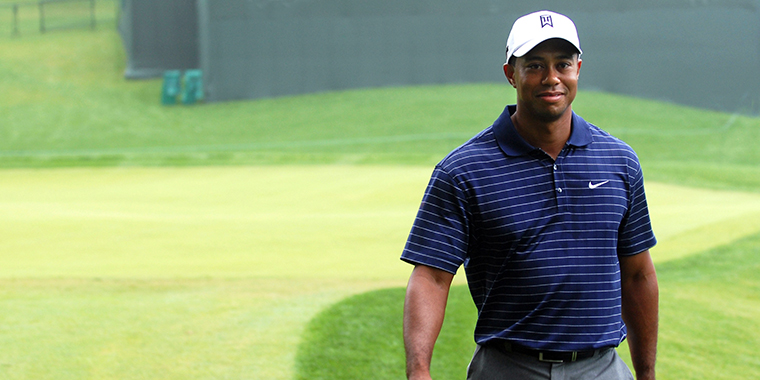Back To the Future: Tiger Woods Has Fifth Spine Surgery

Answer a few questions and we'll provide you with a list of primary care providers that best fit your needs.
Legendary professional golfer Tiger Woods recently underwent a back procedure known as a microdiscectomy to remove a pressurized disc fragment that had been causing pain in his lower back. Woods is certainly no stranger to spinal surgery, as this was his third microdiscectomy in addition to two other, more invasive back procedures.
Remarkably, he is only expected to miss two PGA tour events and has already been practicing his golf swing as he begins his recovery.
Premier Health Now spoke with spine surgeon F. Tony Rastegar, MD, to get a better understanding of microdiscectomy, when it’s prescribed, and how quickly recovery typically takes place.
Touching a Nerve
Essentially, microdiscectomy is needed when degenerative processes take place in the spine and arthritis ultimately causes a disc to rupture. Pain and weakness can occur when fragments of that ruptured disc press against the nerves in the spine.
“The nerves along the spine are extremely sensitive,” says Dr. Rastegar. “I compare it to the irritation a person feels with a foreign object in the eye, such as saw dust, but spinal nerves are even more sensitive than that. Microdiscectomy is a minimally invasive procedure where we use specialized instruments to remove the irritating disc fragment under microscopic visualization to provide pain relief.”
Since the body in many instances has the potential to heal itself over the period of a few weeks, surgery is considered after all nonoperative treatment options have failed. If pain and weakness persist, microdiscectomy is a good option to avoid permanent nerve damage and help patients return to normal life faster.
The procedure’s minimally invasive nature allows for a fairly quick recovery, and that relief may help explain why Woods has been able to begin practicing once again. On the other hand, it’s also possible that his troubled health history, combined with the excessive demand placed on his spine as a golfer, could lead to recurrent issues in the future, but only time will tell.
“These types of degenerative disc issues are caused by multiple factors including smoking, genetics, and physical demand placed on the spine,” says Dr. Rastegar. “As a golfer, Tiger Woods puts increased demands on his spine because of repetitive twisting and bending. This, combined with possible genetic predisposition, makes him likely to have recurrent issues in the future.” The good news is that this procedure can help alleviate his pain now and allow him to get back to doing what he does best.
Answer a few questions and we'll provide you with a list of primary care providers that best fit your needs.
Sources: F. Tony Rastegar, MD, Premier Orthopedic Spine Center; ESPN



